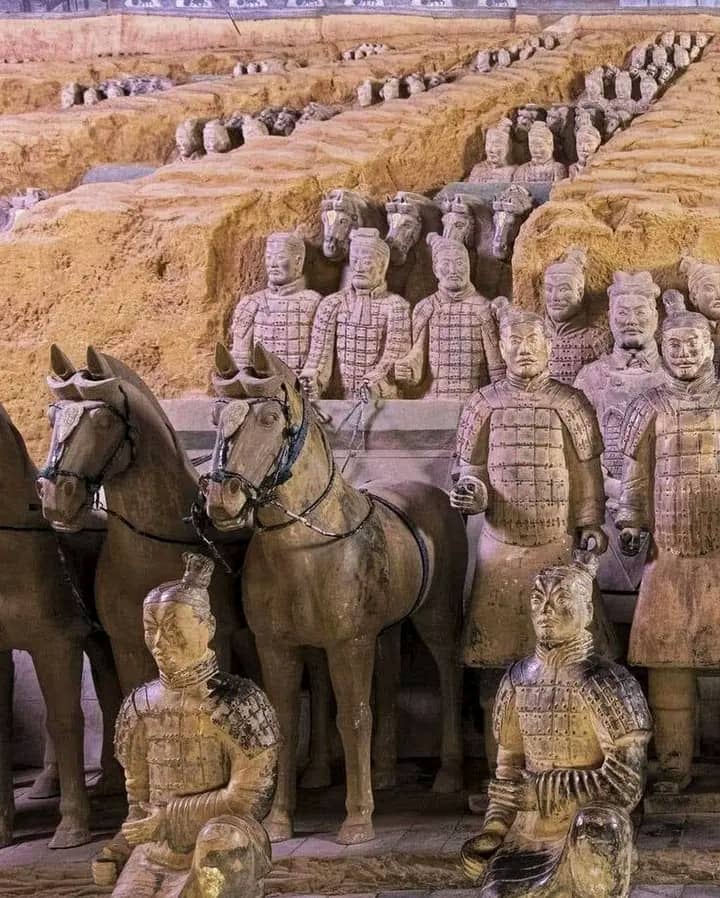The Terracotta Army is a remarkable archaeological find that has captivated the world since its discovery in 1974 near Xi’an, China.
This collection of thousands of life-sized terracotta sculptures depicts the armies of Qin Shi Huang, the first Emperor of China, and was buried with him around 210-209 BCE to accompany him in the afterlife.
Each terracotta warrior is unique, with distinct facial features, hairstyles, and clothing, indicating that they were modeled after real soldiers. The attention to detail and craftsmanship of these figures highlights the advanced artistic skills and technological capabilities of the Qin Dynasty.
The Terracotta Army was discovered by a group of local farmers digging a well, and its subsequent excavation has provided invaluable insights into the military practices, weapons, armor, and attire of the Qin Dynasty.
The army is arranged in battle formation, with a vanguard of archers surrounding the bulk of the infantry and chariots, all poised for battle.
Today, the Terracotta Army is a UNESCO World Heritage Site and a major tourist attraction in China, drawing millions of visitors each year to marvel at the awe-inspiring sculptures and learn about the fascinating history behind this ancient army of terracotta warriors.
READ ALSO: 10 Terminologies in the Nigerian Army and What They Stands For
The discovery of the Terracotta Army has not only shed light on the military and artistic achievements of the Qin Dynasty but has also captured the imagination of people around the world, serving as a testament to the enduring legacy of ancient Chinese civilization.

